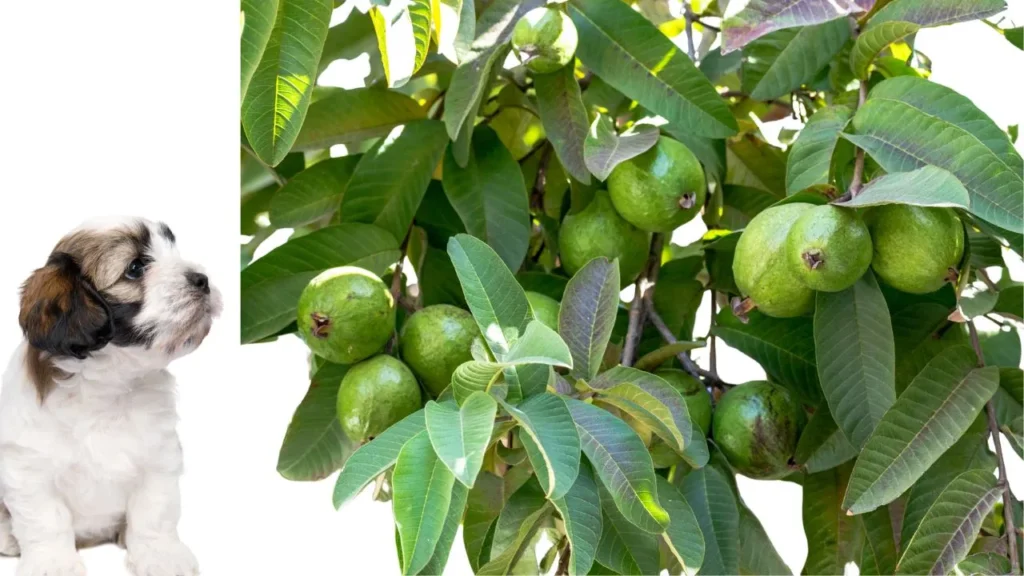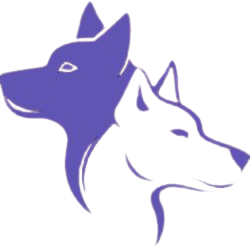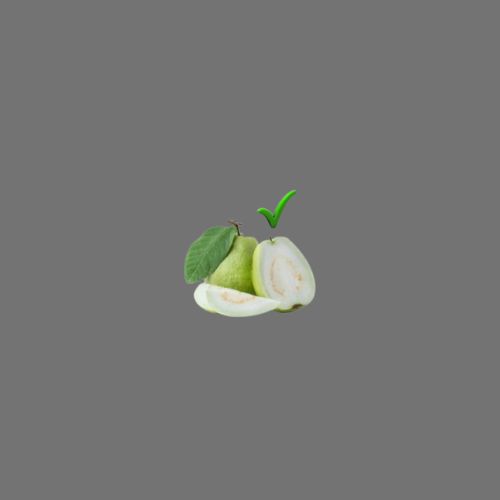This is a tropical fruit, Yes, dogs can eat guava but in small amounts as a treat. this are healthy for dogs, but too much can cause weight gain because it has a lot of sugar. You can give your dog different kinds of guava, like apple guava, white guava, pineapple guava, red guava, and Thai guava. Always remove the rind and seeds before giving guava to your dog.
How to Safely Feed Guava to Dogs
- Pick Fresh Guava: Choose fresh, ripe fruit for your dog, and avoid unripe or overripe ones since they can be harder to digest.
- Remove Seeds, Skin, and Leaves: Take out the seeds and peel the skin before giving this fruit to your dog. Also, remove any leaves, as they can be harmful.
- Cut into Small Pieces: Chop the fruit into small pieces to make it easier for your dog to eat and to avoid choking.
- Try a Little First: If your dog hasn’t had this type of fruits before, start with a small amount to check if it agrees with their stomach.
- Feed in Moderation: this should only be a treat. Too much can cause weight gain because of its sugar content.
By following these steps, you can safely let your dog enjoy this f
Can Dogs Eat All Types of Guava?
Dogs can safely eat all of these types of fruits and other healthy fruits but in small amount and make sure seeds and rinds are removed, guava lead extract.
Health Benefits of Guava for Dogs


Vitamins
This fruit packed with vitamins is it full of vitamins A and C, which can help keep your dog’s immune system strong, and support healthy skin, fur, and eyesight.
Good for Digestion
The fiber in this fruit can help your dog digest food better and prevent issues like constipation and maintain a healthy balance of gut bacteria, which is essential for digestion and nutrient absorption.
Protects Cells
This has antioxidants that can protect your dog’s cells from damage and helping them stay healthy for long time.
Low-Calorie Treat
This fruit is a low-calorie snack, that’s why it is a good option if you want to give your dog a treat without adding too many extra calories.
Supports Heart Health:
The potassium and magnesium in this fruit can help keep your dog’s heart healthy and support normal muscle and nerve functions.
These benefits make this fruit a healthy addition to your dog’s diet, as long as it’s given in small amounts.
Considerations When Preparing Guava for Dogs
This can be a tasty treat for your dog, but there are a few things to keep in mind:
- Too Much Can Upset the Stomach: that has a lot of fiber, and if your dog eats too much, it can cause diarrhea or stomach cramps.
- High in Sugar: this has natural sugars like a date fruit , so eating too much can lead to weight gain or even obesity.
- Remove Seeds and Skin: Always take out the seeds and peel off the skin before giving any fruit to your dog, as they can be a choking hazard and Also, be sure to remove the leaves, as they are harmful to dogs.
Risks of Guava Fruits for Dogs
While can be a healthy treat for dogs, there are some risks to keep in mind:
- Stomach Issues: If a dog eats too much, it might cause tummy problems like diarrhea, vomiting, or cramps, especially if they’re not used to high-fiber foods.
- Weight Gain: This have natural sugars. Giving your dog too much can lead to weight gain or obesity, especially if they aren’t very active.
- Choking Risk: The seeds and skin can be a choking hazard. Always remove these parts before giving to your dog.
- Allergies: Some dogs might be allergic to guava or other fruits. Signs of an allergy include itching, swelling, tummy upset, or trouble breathing.
- Toxic Leaves: The leaves of this fruit plant are toxic to dogs. Make sure only the fruit is given and that all leaves are removed.
- Medication Interactions: If your dog takes any medications, check with your vet before adding new foods like this, as some fruits can affect certain medications.
Signs That Your Dog Might Be Allergic to Guava
- Itching or Scratching: If your dog starts to scratch a lot after eating this, it might mean they’re having an allergic reaction.
- Swelling: Look for swelling, especially around the face, paws, or ears, which could be a sign of an allergy.
- Stomach Problems: If your dog has diarrhea, vomits, or seems to have an upset stomach after eating this fruit, these could be signs of a food allergy.
- Sneezing or Coughing: Some dogs may start sneezing, coughing, or having trouble breathing after eating something they’re allergic to.
- Lethargy: If your dog seems more tired or sluggish than usual after eating, it could indicate an allergy.
If you notice any of these signs after your dog eats guava, stop giving it to them and talk to your veterinarian for advice.
Alternatives to Guava for Dogs
If you’re looking for tasty and healthy treats for your dog besides guava, here are some great options:
- Apples: Apples are full of vitamins A and C. Remove the seeds and core, then cut into small pieces.
- Blueberries: These little berries are healthy and low in calories, making them a fun snack for dogs.
- Carrots: Fresh carrots are crunchy and good for your dog. You can serve them raw or cooked (without any seasoning).
- Pumpkin: Plain canned or cooked pumpkin is high in fiber and can help with digestion.
- Sweet Potatoes: Cooked sweet potatoes are tasty and nutritious. You can mash them or cut them into small bites.
- Bananas: In small amounts, bananas are a good source of potassium and vitamins. Slice them up for easy eating.
- Peanut Butter: Most dogs love peanut butter! Just make sure it doesn’t have xylitol, which is harmful to dogs.
- Watermelon: Watermelon is hydrating and low in calories and also wintermelon provide same energy. Remove the seeds and rind, and cut the flesh into small pieces.
These alternatives offer a variety of flavors and nutrients that your dog will enjoy. Always introduce new treats slowly and watch for any signs of allergies or tummy troubles.
Introducing new dog food
Introducing new foods into your dog’s diet can be exciting, but it’s important to do it safely to prevent stomach issues or bad reactions. Here are some tips to help:
Talk to Your Vet
Before changing your dog’s diet, check with your vet. They can give advice based on your dog’s age, health, and any existing conditions.
Take It Slow
Start by adding a small amount of the new food to your dog’s regular food. Gradually increase the amount over several days to avoid upsetting your dog’s stomach.
Pick Safe Foods
Not all human foods are safe for dogs. Some good options include:
- Cooked lean meats (chicken, turkey, beef)
- Cooked veggies (carrots, green beans, sweet potatoes)
- Fruits like apples, blueberries, and bananas (in moderation)
Watch for Reactions
Keep an eye on your dog for any signs of an allergic reaction, such as:
- Vomiting or diarrhea
- Itchy skin
- Swelling
If you notice any of these, stop the new food and talk to your vet.
Keep It Balanced
Make sure the new food fits into a balanced diet for your dog. If you’re thinking about making your dog’s food at home, get help from your vet or a pet nutritionist to ensure it’s healthy.
Use New Foods as Treats
Introduce new foods as treats rather than changing the entire meal right away. This helps your dog get used to new flavors without big diet changes. Treats should make up less than 10% of their daily food intake.
Stick to a Routine
Once you know what foods your dog likes and can tolerate, try to stick with them. Changing your dog’s diet too often can cause stomach problems.
Make Sure They Have Water
Always have fresh water available, especially when introducing new foods. Some foods can make your dog more thirsty.
Pay Attention to Their Behavior
Watch how your dog acts after trying new foods. Look for changes in energy, bowel movements, or overall health. If anything seems off, switch back to their regular food and consult your vet.
By following these tips, you can safely introduce new foods to your dog while keeping their health and happiness in mind.
Conclusion
The last words is we tell about Can Dogs Eat this Fruits? Benefits and Risks For Dogs, Many fruits are good for dogs, but they should be given in moderation. Always monitor your dog while eating and after introducing new foods.











No Comment! Be the first one.